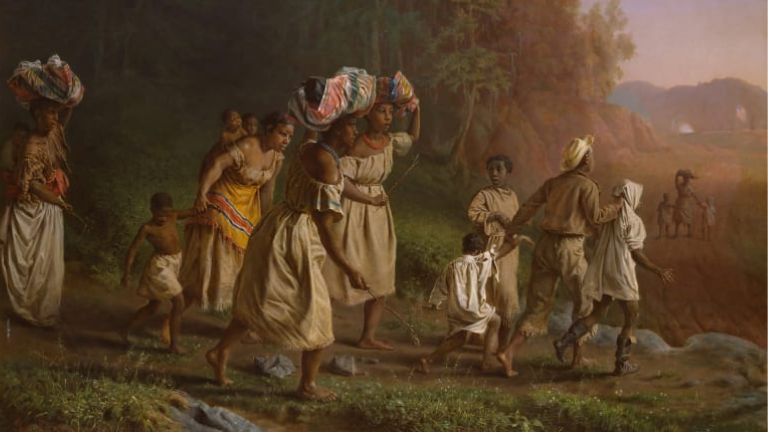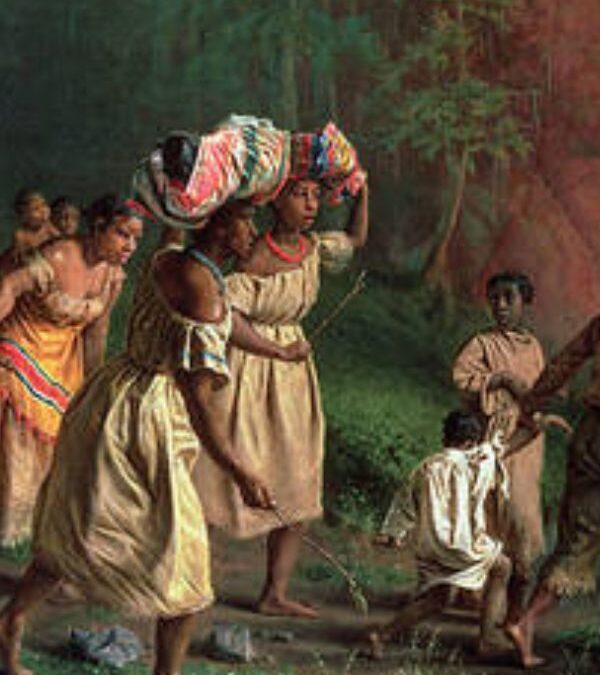Impactful and pivotal, the clandestine railway, also known as the Underground Railroad, played a critical role in shaping African American history. This covert network of individuals and safe houses helped enslaved individuals escape to freedom in the 19th century.
The Underground Railroad not only facilitated the liberation of countless African Americans but also fueled the abolitionist movement and advanced the fight for equality. By delving into the profound impact of this clandestine railway, we can truly understand the resilience, bravery, and determination of those who sought freedom against all odds.

The Clandestine Railway Infrastructure
Secret Routes and Safe Houses
While the Clandestine Railway was not an actual railway, the network of safe routes and hiding places established by abolitionists and sympathetic individuals played a crucial role in aiding enslaved African Americans escape to freedom. This clandestine infrastructure was crucial in ensuring the success of the Underground Railroad.
Key Figures and Conductors
An integral part of the Clandestine Railway was the network of key figures and conductors who risked their lives to guide escapees to safety. These individuals, such as Harriet Tubman and Frederick Douglass, organized escape routes, provided shelter, and acted as liaisons between safe houses, contributing significantly to the success of the clandestine operation.
Understanding the pivotal role that key figures and conductors played in the Clandestine Railway is crucial to appreciating the courage and dedication of those who fought against the oppressive system of slavery. Their strategic planning, unwavering commitment, and fearless actions were instrumental in helping thousands of enslaved individuals find a path to freedom and a chance for a better life.
The Role of the Clandestine Railway in Slavery and Emancipation
Fugitive Slave Acts and Escapes
Clearly, the clandestine railway played a crucial role in aiding enslaved individuals in their escape from bondage. The Fugitive Slave Acts of 1793 and 1850 heightened the risk for escaped slaves, making their journey to freedom perilous. Underground Railroad conductors, often free African Americans and abolitionists, provided safe houses, transportation, and guidance to fugitive slaves as they made their way to freedom in the North or Canada.
Contribution to the Abolition Movement
Acts of resistance against the institution of slavery, such as the clandestine railway, were instrumental in fueling the abolition movement in the United States. The Underground Railroad not only helped enslaved individuals escape to freedom but also brought attention to the inhumanity of slavery. It showcased the bravery of those involved in the network and demonstrated the power of collective action in the fight against oppression.
Fugitive slaves who successfully made their way to freedom with the help of the clandestine railway often became vocal advocates for the abolition of slavery. Their firsthand accounts of the horrors they faced while in bondage served as powerful testimonials that galvanized support for the anti-slavery cause.

The Lasting Legacy on African American Culture
Stories of Bravery and Resistance
One of the most profound impacts of the clandestine railway on African American culture is the abundance of stories showcasing bravery and resilience. These tales of daring escapes and acts of defiance against injustice serve as a testament to the strength and tenacity of those who fought for their freedom. The enduring legacy of these stories continues to inspire future generations and solidify the importance of resistance in the face of adversity.
Influence on Modern African American Literature and Art
With the clandestine railway serving as a powerful symbol of liberation and hope, it is no surprise that its influence can be seen in modern African American literature and art. The themes of liberation, overcoming obstacles, and the strength of community resonate strongly in works by contemporary African American writers and artists. By drawing on the legacy of the clandestine railway, these creators pay homage to the struggles of their ancestors while also forging new paths for cultural expression and empowerment.
It is evident that the impact of the clandestine railway on African American culture extends far beyond its historical significance. Through stories of bravery and resistance, as well as its influence on modern literature and art, the legacy of the clandestine railway continues to shape the narrative of African American history and inspire future generations to strive for freedom and equality.
Challenges in Researching Clandestine Railway History
Limitations Due to Secrecy
On the journey to uncover the impact of the Clandestine Railway on African American history, researchers encounter significant limitations due to the secrecy surrounding the operations of the network. The clandestine nature of the operations meant that there were few official records or writings that documented the activities of the railway, making it challenging to piece together a comprehensive history.
Recent Discoveries and Technological Advances in Historical Research
Secrecy has long shrouded the history of the Clandestine Railway, but recent discoveries and technological advances have started to shed light on this important chapter of African American history. With the use of advanced imaging techniques, digital archives, and collaboration among researchers, new information is gradually coming to light, enriching our understanding of the underground network and its role in the fight against slavery.
Historical research is constantly evolving, and as new technologies and methodologies emerge, the study of the Clandestine Railway continues to benefit. Scholars are now able to uncover hidden stories and perspectives that were previously inaccessible, allowing for a more nuanced and comprehensive exploration of this crucial aspect of African American history.
Conclusion
So, the clandestine railway played a crucial role in shaping African American history by providing a network of safe routes for enslaved individuals to escape to freedom. This underground system of assistance and support paved the way for countless individuals to break free from the chains of slavery and seek a better future. The impact of the clandestine railway continues to resonate today, reminding us of the resilience and courage of those who fought against injustice and oppression. It serves as a powerful reminder of the strength of the human spirit and the unwavering determination to strive for freedom and equality.
FAQ
Q: What was the Clandestine Railway in African American history?
A: The Clandestine Railway, also known as the Underground Railroad, was a network of secret routes and safe houses used by enslaved African Americans to escape to free states and Canada in the early to mid-19th century.
Q: How did the Clandestine Railway impact African American history?
A: The Clandestine Railway played a crucial role in the fight against slavery by helping thousands of enslaved individuals escape to freedom and contributing to the larger abolitionist movement.
Q: Who were key figures in the Clandestine Railway?
A: Key figures in the Clandestine Railway included Harriet Tubman, Frederick Douglass, and Levi Coffin, among others, who risked their lives to lead enslaved individuals to freedom.
Q: What were some challenges faced by participants in the Clandestine Railway?
A: Participants in the Clandestine Railway faced numerous challenges, including the risk of capture and severe punishment, navigating unfamiliar terrain, and enduring harsh conditions during their journeys to freedom.
Q: How did the legacy of the Clandestine Railway impact African American history?
A: The legacy of the Clandestine Railway continues to inspire future generations, symbolizing the resilience, courage, and solidarity of those who fought against oppression and injustice in pursuit of equality and freedom.
See also our article: Harriet Tubman










